| |
updated September 3, 2024 |
| MULTIFACTOR AUTHENTICATION
(MFA) NOW REQUIRED FOR ALL CAMPUS LOGINS Use of University computers and systems now requires 2-factor authentication. This means that after you type your password, a confirmation message will be sent to your phone, which requires an app. See Set up MFA for instructions. |
| Students in PLNT2530, PLNT3140, PLNT4610 and PLNT7690 will automatically have VPN access by the first week of classes. Others must send a request to IST for VPN access. |
Start --> Programs --> Thinlinc --> Thinlinc Client.
| 3. Enter your userid and password Type in 'ccldesktop.cc.umanitoba.ca' as the server. ccldesktop redirects you to one of five Linux servers, gaia, mars, mercury, jupiter or venus. Type in your userid and password, and click on "Connect" Usually, your userid is the part of the email address before the '@' symbol. eg. umshultz7. However, for many students, Thinlinc requires your full U of M email address eg. umschultz7@myumanitoba.ca. Use whichever one works as the Username. Your screen will switch to a desktop session running on one of the CCL Linux login hosts. |
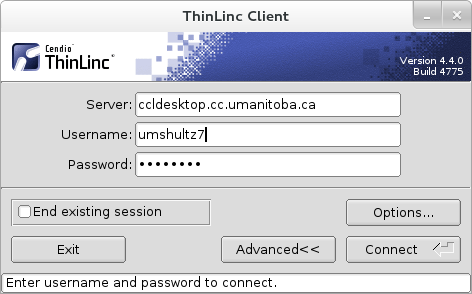 |
| Three desktop environments are available on
the CCL system. Since these tutorials assume you are using the Xfce Desktop, select "Xfce Desktop" in the Thinlinc Welcome menu and click OK. |
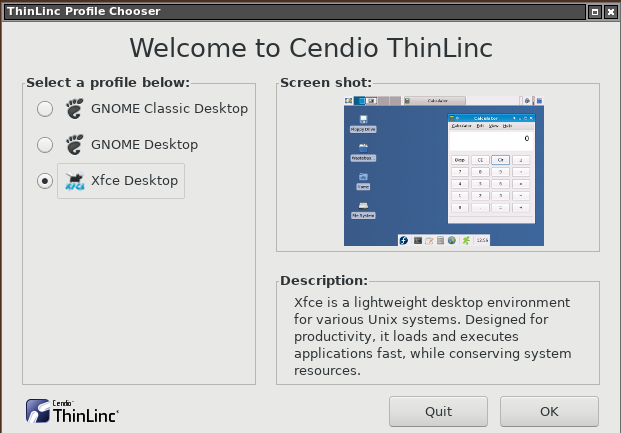 |
| 4. Switching between Thinlinc and your
local desktop By default, your Linux screen fills the entire display. At any time during your Fullscreen session you can bring up the Thinlinc menu by pressing F8* at the top of the keyboard. The menu will pop up. Change to single window mode by unchecking "Full screen", as shown at right. Your thinlinc session will now be enclosed in a window, which can be minimized (_) if you wish to work on your Windows/Mac screen. To return to a full-screen session, move your mouse into the thinlinc window and press F8 again, and check the "Full screen" box. *On some keyboards, you may need to hold down the Fn key, and press F8. |
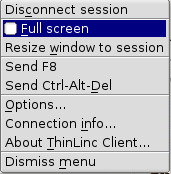 |
| The best way to ensure that you can reconnect
to a previously disconnected session is to open the Options
menu in the Thinlinc Client, and, under Reconnect Policy,
check the box that says "Always ask how multiple sessions
should be handled. |
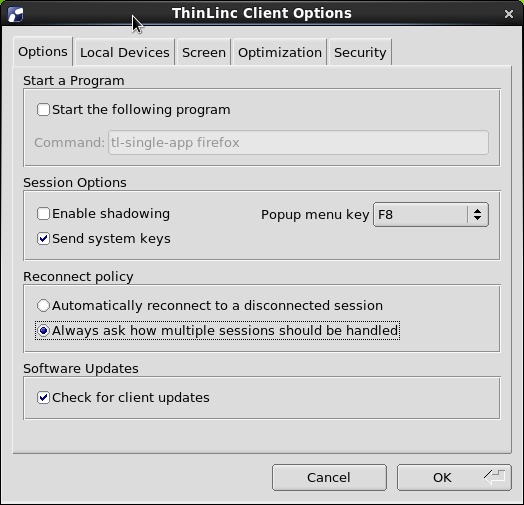 |
| The next time you log into the host, you will
see a list of sessions currently running on that host. Choose the session you wish to connect to and click on "Connect". |
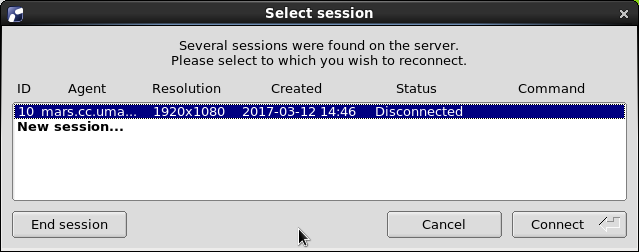 |